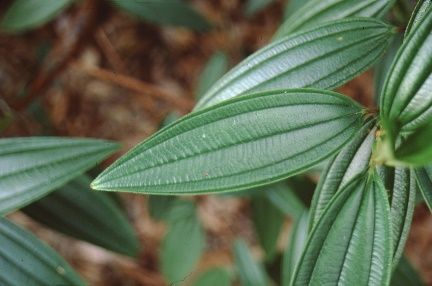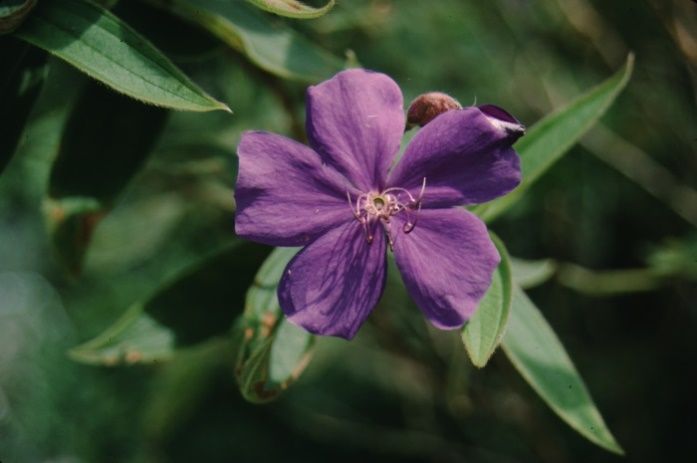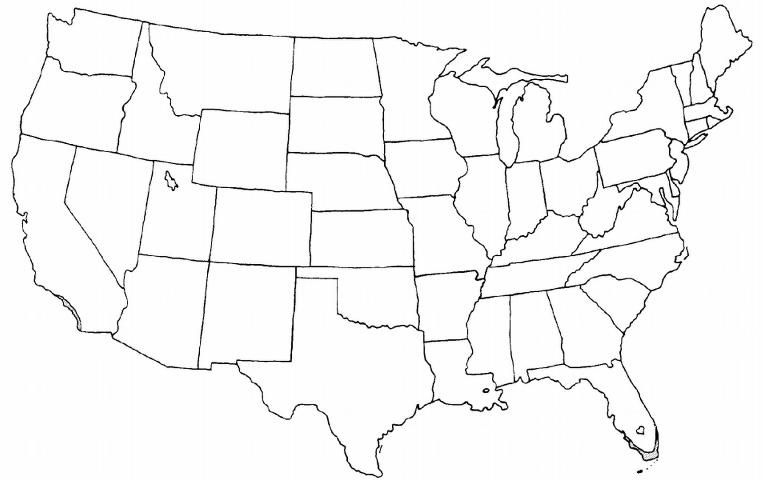Introduction
This sprawling, evergreen shrub or small ornamental tree ranges from 10 to 15 feet (20 feet with proper training) in height. Older trees become much wider. It is the easiest tibouchina to train into a tree. It can be trimmed to any size and still put on a vivid flower display. The dark green, velvety, 4- to 6-inch-long leaves have several prominent longitudinal veins. Large, royal purple blossoms, flaring open to 2 inches, are held on terminal panicles above the foliage, creating a spectacular sight when in full bloom. Some flowers are open throughout the year, but they are especially plentiful from May to January.

Credit: Edward F. Gilman, UF/IFAS

Credit: Edward F. Gilman, UF/IFAS

Credit: Edward F. Gilman, UF/IFAS
General Information
Scientific name: Tibouchina granulosa
Pronunciation: tib-oo-KYE-nuh gran-yoo-LOW-suh
Common name(s): purple glory tree, Brazilian glorytree
Family: Melastomataceae
Plant type: tree
USDA hardiness zones: 10B through 11 (Figure 4)
Planting month for zone 10 and 11: year-round
Origin: not native to North America
Invasive potential: not known to be invasive
Uses: near a deck or patio; screen; specimen; container or above-ground planter; trained as a standard
Availability: generally available in many areas within its hardiness range

Credit:
Description
Height: 15 to 20 feet
Spread: 15 to 20 feet
Plant habit: round; irregular outline or silhouette
Plant density: dense
Growth rate: moderate
Texture: coarse
Foliage
Leaf arrangement: opposite/subopposite
Leaf type: simple
Leaf margin: serrulate
Leaf shape: ovate
Leaf venation: parallel
Leaf type and persistence: evergreen
Leaf blade length: 4 to 8 inches
Leaf color: green
Fall color: no fall color change
Fall characteristic: not showy
Flower
Flower color: purple
Flower characteristic: spring flowering; summer flowering; fall flowering
Fruit
Fruit shape: round
Fruit length: less than 0.5 inch
Fruit cover: dry or hard
Fruit color: brown
Fruit characteristic: inconspicuous and not showy
Trunk and Branches
Trunk/bark/branches: not particularly showy; no thorns
Current year stem/twig color: green
Current year stem/twig thickness: medium
Culture
Light requirement: plant grows in full sun
Soil tolerances: clay; acidic; well-drained; sand; loam
Soil salt tolerances: unknown
Plant spacing: not applicable
Other
Roots: usually not a problem
Winter interest: no special winter interest
Outstanding plant: not particularly outstanding
Pest resistance: long-term health usually not affected by pests
Use and Management
Purple glory tree is ideal for the mixed shrubbery border or can be used in small groupings to compound the impact of bloom time. Trees can become nicely shaped with some early pruning to provide for strong, upright trunks. The canopy will need to be pruned regularly to keep lower branches from drooping to the ground.
Full sun is best for flowering and the plant will thrive on any well-drained soil when regularly watered. Its growth habit is somewhat weedy, requiring training and pruning, especially when it is young, to develop and maintain it as a tree. It can be trained as a standard or espaliered against a south- or west-facing wall receiving at least 5 hours of full sun. It can also be trained on a trellis or arbor as a vine. Pinching new growth helps increase branching and will enhance the flower display on small plants.
Propagation is by cuttings.
Pests and Diseases
Scales and nematodes can limit growth.
Mushroom root rot can occur in soil that is kept too wet.